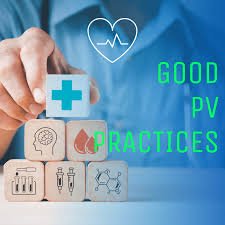Guideline on good pharmacovigilance practices (GVP) – Module IV – Pharmacovigilance audits

GVP Module IV – Pharmacovigilance Audits
🔹 Purpose
GVP Module IV provides guidance on the planning, conduct, reporting, and follow-up of audits of pharmacovigilance (PV) systems, including the role of quality assurance in maintaining PV compliance.
🔹 Key Objectives of PV Audits
-
To verify compliance with legal PV obligations.
-
To assess the effectiveness of the pharmacovigilance system.
-
To ensure continuous improvement and minimization of risk to patient safety.
🔹 Scope
Applies to:
-
Marketing Authorization Holders (MAHs)
-
Sponsors of clinical trials
-
Third parties performing PV activities
-
Contract Research Organizations (CROs)
-
QPPVs and affiliates
🔹 Audit Requirements
-
Audits are a mandatory part of a pharmacovigilance quality system.
-
Should be independent, objective, and risk-based.
-
Must be documented and subject to follow-up.
🔹 Three-Level Risk-Based Audit Strategy
1. Strategic Level (Audit Strategy)
-
High-level planning covering 2–5 years.
-
Based on overall PV risk assessment.
-
Should cover global and local systems, vendors, and affiliates.
2. Tactical Level (Audit Programmer)
-
Yearly plan outlining specific audits to be performed in the year.
-
Based on:
-
Product portfolio risks.
-
PV changes or reorganizations.
-
Previous audit outcomes.
-
3. Operational Level (Audit Plan & Execution)
-
Detailed plan for each individual audit.
-
Includes scope, objectives, timelines, auditees, and methods.
🔹 Key Audit Areas in Pharmacovigilance
-
Pharmacovigilance System Master File (PSMF)
-
Qualified Person for Pharmacovigilance (QPPV) oversight
-
Adverse event collection and reporting
-
Signal management
-
Risk management systems
-
Data management and safety databases
-
Contracts and oversight of third parties
-
Training and SOP compliance
🔹 Audit Process Steps
1. Planning and Preparation
-
Define scope, objective, and criteria.
-
Assign qualified audit personnel.
-
Notify auditee and collect documents.
2. Conduct of Audit
-
On-site or remote.
-
Review of procedures, systems, and interviews.
3. Reporting
-
Audit findings are classified as:
-
Critical: Potential serious risk to patients.
-
Major: Could affect PV activities significantly.
-
Minor: No significant risk but still a non-compliance.
-
-
Audit report is shared with management and concerned teams.
4. Follow-up
-
Implementation of Corrective and Preventive Actions (CAPA).
-
Monitoring until closure of all findings.
🔹 Audit Documentation
-
Audit reports
-
CAPA plans
-
Audit schedules and logs
-
Evidence of CAPA implementation
-
Audit trails
🔹 Role of the QPPV
-
Should be aware of audit outcomes and findings relevant to the EU pharmacovigilance system.
-
Should ensure CAPA is implemented for EU-related issues.
📌 Conclusion
Pharmacovigilance audits are essential to ensure a robust quality system, regulatory compliance, and protection of patient safety. A structured, risk-based audit approach ensures ongoing oversight and accountability of the PV system.
🎓 Discover one of the best Pharmaceutical Pharmacovigilance course available — click below to explore the course that’s shaping future Pharmacovigilance skills.

